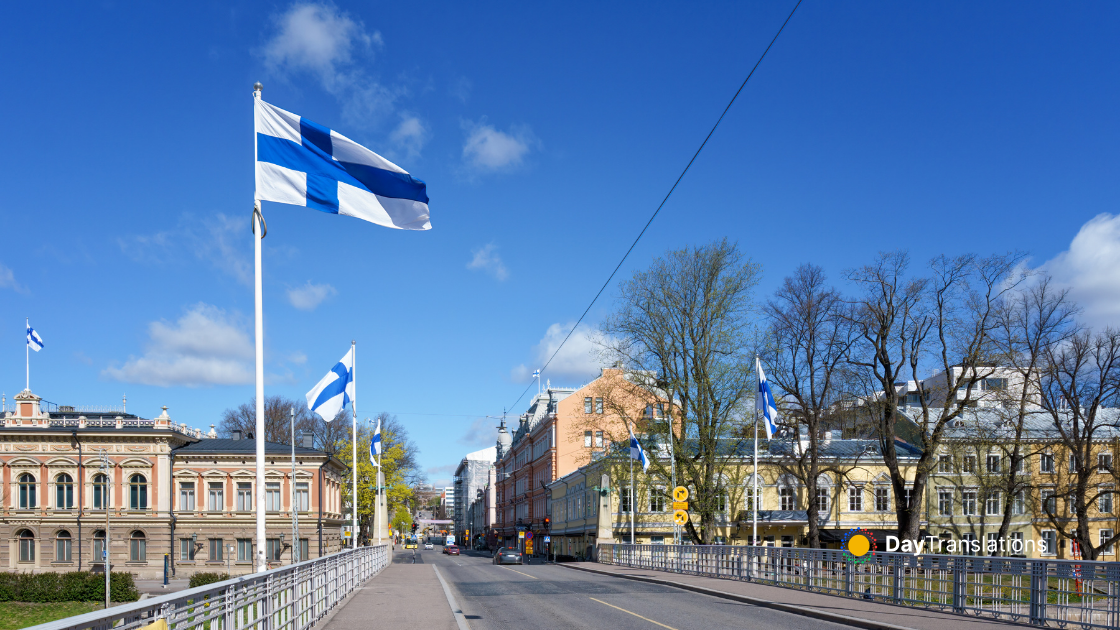Geography of Denmark: Important Geographical Information about Denmark
In this Country Profile
Denmark shares a border of 68 kilometers with Germany to the south and is otherwise surrounded by 7,314 kilometers of coastline. It occupies 43,094 square kilometers. Since 2000 Denmark has been connected by the Øresund Bridge to southern Sweden.
Denmark’s northernmost point is Skagens point (the north beach of the Skaw) at 57° 45′ 7? northern latitude; the southernmost is Gedser point (the southern tip of Falster) at 54° 33′ 35? northern latitude; the westernmost point is Blåvandshuk at 8° 4′ 22? eastern longitude; and the easternmost point is Østerskær at 15° 11′ 55? eastern longitude. This is in the archipelago Ertholmene 18 kilometers northeast of Bornholm. The distance from east to west is 452 kilometers (281 mi), from north to south 368 kilometers (229 mi).
:: Denmark’s Geography and Regions ::
Denmark consists of the peninsula of Jutland (Jylland) and 443 named islands (1,419 islands above 100 m² in total). Of these, 72 are inhabited, with the largest being Zealand (Sjælland) and Funen (Fyn). The island of Bornholm is located east of the rest of the country, in the Baltic Sea. Many of the larger islands are connected by bridges; the Øresund Bridge connects Zealand with Sweden; the Great Belt Bridge connects Funen with Zealand; and the Little Belt Bridge connects Jutland with Funen. Ferries or small aircraft connect to the smaller islands. Main cities are the capital Copenhagen on Zealand; Århus, Aalborg and Esbjerg in Jutland; and Odense on Funen.
The country is flat with little elevation; having an average height above sea level of 31 metres (102 ft). The highest natural point is Møllehøj, at 170.86 metres (560.56 ft). Other hills in the same area southwest of Århus are Yding Skovhøj at 170.77 metres (560.27 ft) and Ejer Bavnehøj at 170.35 metres (558.89 ft). The area of inland water is: (eastern Denmark) 210 km2 (81 sq mi); (western D.) 490 km2 (189 sq mi).
Denmark’s coastline is, 7,314 km (4,545 mi). No location in Denmark is further from the coast than 52 km (32 mi). The size of the land area of Denmark cannot be stated exactly since the ocean constantly erodes and adds material to the coastline, and because of human land reclamation projects (to counter erosion). On the southwest coast of Jutland, the tide is between 1 and 2 m (3.28 and 6.56 ft), and the tideline moves outward and inward on a 10 km (6.2 mi) stretch.
Phytogeographically, Denmark (including Greenland and the Faroe Islands) belongs to the Boreal Kingdom and is shared between the Arctic, Atlantic European and Central European provinces of the Circumboreal Region. According to the World Wide Fund for Nature, the territory of Denmark can be subdivided into two ecoregions: the Atlantic mixed forests and Baltic mixed forests. The Faroe Islands are covered by the Faroe Islands boreal grasslands, while Greenland hosts the ecoregions of Kalaallit Nunaat high arctic tundra and Kalaallit Nunaat low arctic tundra.
The climate is in the temperate zone. The winters are not particularly cold, with mean temperatures in January and February of 0.0 °C, and the summers are cool, with a mean temperature in August of 15.7 °C. Denmark has an average of 121 days per year with precipitation, on average receiving a total of 712 mm per year; autumn is the wettest season and spring the driest.
Because of Denmark’s northern location, the length of the day with sunlight varies greatly. There are short days during the winter with sunrise coming around 9:00 am and sunset 4:30 pm, as well as long summer days with sunrise at 4:00 am and sunset at 10 pm. The shortest and longest days of the year have traditionally been celebrated. The celebration for the shortest day corresponds roughly with Christmas (Danish: jul), and modern celebrations concentrate on Christmas Eve, 24 December. The celebration for the longest day is Midsummer Day, which is known in Denmark as sankthansaften (St. John’s evening). Celebrations of Midsummer have taken place since pre-Christian times.

Sorry, the comment form is closed at this time.